- Peperomia Serpens: How Easy It Is To Care For It? - September 24, 2021
- Best Indoor Fiberglass Planters Guide: Our Top Picks - September 6, 2021
- Peperomia Polybotrya: Is It Easy To Keep This Plant Alive? - August 31, 2021
There are at least 2,000 species of begonia, and more hybrids and cultivars are introduced over time. It’s possible to plant different types of begonia in your garden and still get various kinds of blooms, foliage, and colors. You’d think that different types of plants were planted, even if it’s all begonias.
There are eight major begonia types and varieties
- Cane Begonias
- Rex Begonias
- Rhizomatous Begonias
- Semperfloren Begonias
- Shrub-Like Begonias
- Thick-Stemmed Begonias
- Scandent or Trailing Begonias
- Tuberous Begonias
Get to know each variety of begonias here and find out just how to care for them.
Cane Begonias
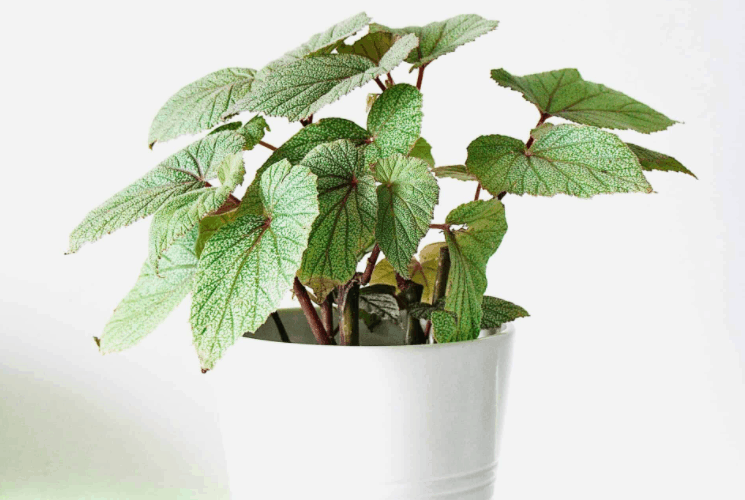
Cane begonias are one of the more popular cultivated begonias out there. There are many types of cane begonias, but these plants have a bamboo-like appearance. In fact, some people describe them as bamboo with flowers. Also popularly known as angel wing begonias, these begonias have nodes or swollen joints, just like bamboo. These nodes are where the leaves grow.
You can grow cane begonias in containers up to at least six feet (1.8 meters) tall. But if you plant them directly to the ground, it goes more than double that height at around 15 feet (4.6 meters). The leaves can sometimes appear textured or spotted. They can be quite beautiful, especially when accentuated by flowers.
Three Types of Cane Begonias
Cane begonias are divided into three types:
- Superba, which have marked cuts on its leaves, that sometimes sports spots
- Mallet, which has a deep rose or maroon foliage
- Other types fall between these two.
Caring for Cane Begonias
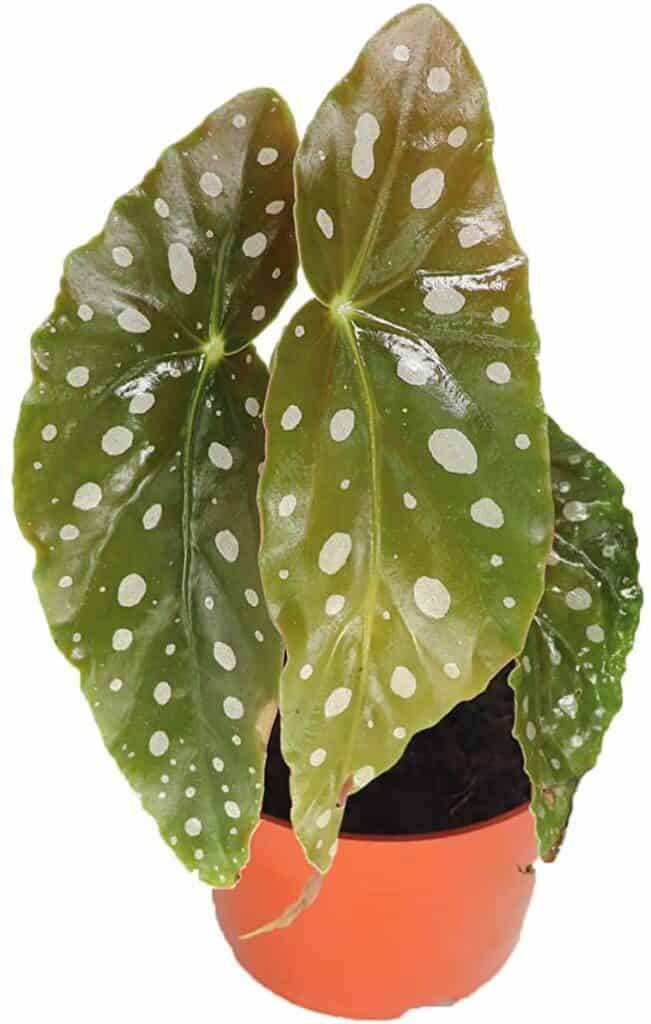
Cane begonias generally like sunny locations. You don’t have to put them in full sun, but you should ensure they are located in a bright area. They also need rich soil that has a lot of hummus in it.
Unlike other varieties, cane begonia can live in heavy soil. You don’t have to fret about temperature, humidity, and watering when it comes to these plants, as they can be very flexible. Just water deeply once the soil feels dry to the touch.
You will need to prune cane begonias to make way for new growth, and you will want to repot and put it in fresh soil. Prune the tips every once in a while so that the lower branches will sprout new leaves. If they are correctly cared for, cane begonias are relatively immune to pests, insects, and diseases. However, you should go with natural ingredients and the most gentle products if you encounter a problem.
Propagate cane begonias by stem cuttings. Cut near the tip and include around two or more nodes. You can root it in sand or perlite and then transplant it in soil afterward.
Some examples of cane begonia include:
- Begonia aconitifolia
- Begonia angularis
- Begonia coccinea
- Begonia dichroa
- Begonia maculata
Rex cultorum
Rex begonias are wondrous with their multicolored leaves that are marked with different shades and patterns. These plants offer a lot of color and dazzle. While these plants do have rhizomes, they are not categorized under rhizomatous begonia because of:
- The spectacular leaves
- Some grow upright
- They have a different set of care requirements
The parent plant is the Begonia rex and another rhizomatous begonia. Some Rex cultorum begonias bloom, but these flowers often play support roles to the star of the show: the leaves.
Here are some examples of rex begonias:
- Begonia ‘Curly Fireflush’
- Begonia ‘Lalomie”
- Begonia ‘Millie Thompson’
- Begonia ‘Red Delta‘
Caring for Rex Begonias
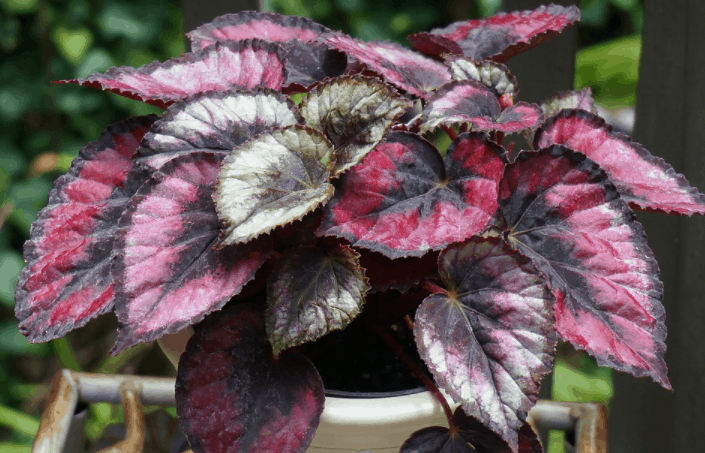
These plants are not called “kings” for nothing. They can be pretty fussy, requiring more than 50 percent humidity or higher. They also survive in shallow pots, porous growing media, and a lot of feeding. They are also more prone to dying because of overwatering. But while they are more challenging to care for, the dazzling display of colorful leaves will all make your effort worth it.
Rex begonias like a balanced fertilizer that has slightly more nitrogen and phosphorus and a side of potassium when they start growing. After that, you should use a slow-release fertilizer that can keep them fed. Gradually stop the feeding once fall arrives and then stop when the cold months of winter come.
Upright growing rex begonias need to be pruned. If it grows sideways, then you’re in luck, and you can put your shears away. However, if you notice that there are bald spots in the pot, you can prune the rhizomes to encourage new growth and cover these spaces. These plants are not susceptible to insect infestations, except for mealybugs.
If you find these insects on your begonia, just put some rubbing alcohol on a cotton swab and then touch the mealybugs with it.
Rhizomatous Begonias
Rhizomes are modified stems. They can grow horizontally and grow underground. These rhizomes or rootstalk can grow both roots and stalks. Rhizomatous begonias have these modified stems where attractive leaves can emerge. These begonias do not need a lot of space and can be very compact.
However, come blooming time, these plants can surprise you. They often put out a show with countless flowers that can cover the foliage or the entire plant. When spring comes, these begonias become alive with flowers and colors. There are miniature rhizomatous begonias, but some cultivars can have leaves that measure up to three feet (0.9 meters).
Most rhizomatous begonias keep close to the ground because their stems grow horizontally. As such, they can cover a lot of ground but are usually low-growing. Some examples of rhizomatous begonias include:
- Begonia crestabruchii
- Begonia leprosa
- Begonia luzonensis
- Begonia roxburghii
- Begonia versicolor
Caring for Rhizomatous Begonias
The first thing you should understand about these plants is that they store water, saving you from infrequent watering. They also hold their own nutrients. Because of their ability to store nutrients and water, they can be straightforward to grow and are more forgiving to being neglected. You can plant most cultivars in shallow pots, as these begonias don’t need deep soil.
When you’re growing in containers, be sure to use a pot that’s only big enough to accommodate the plant. If you need to repot, use a container that’s one size bigger than the current one.
Most rhizomatous begonias are not particular when it comes to humidity. But the distinctive foliage variety, or those that have textured and colorful leaves, needs high humidity. It’s best to grow distinctive foliage in terrariums.
Plant rhizomatous begonias if you live in a cooler area as they do well in places where temperatures fall between 58 to 72 degrees Fahrenheit (14.4 to 22.2 degrees Celsius). While rare, these plants can often fall victim to mealybugs, which you can get rid of with a non-toxic and all-natural insecticide.
Keep rhizomatous begonias from strong direct sun. Instead, put them in an area where they can get indirect light for a few hours a day, such as under a tree or any other shaded area. Take good care of your rhizomatous begonias, and it will reward you with clusters and clusters of flower.
Semperflorens Begonias
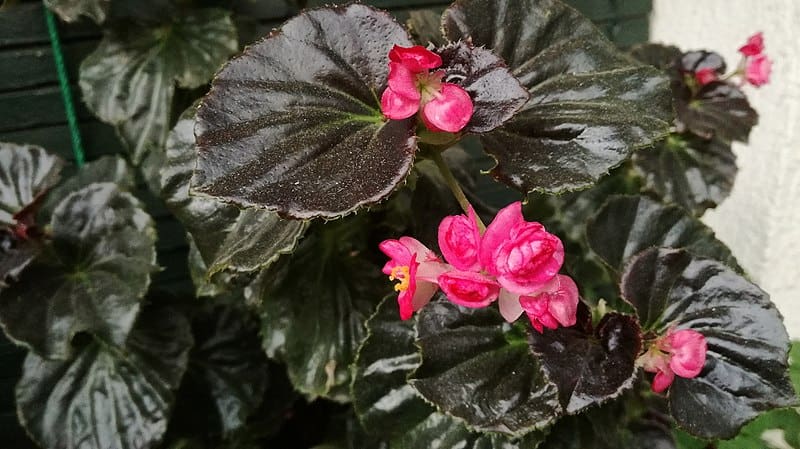
You might know semperflorens begonias by their other name: wax begonias. With the waxy appearance of these leaves, this group is actually composed of several cultivars. Most plants come from hybrids of Begonia semperflorens, B. schmidtiana, and others. As you can guess, these plants can have a wide variety of colors, shapes, forms, and sizes.
Waxy begonias are grown as annuals, and most people use them as bedding plants. These have round leaves and mark your gardens with flowers all year round. Waxy begonias have flowers in all shades of white, pink, or red. Their foliage is mostly bronze or green, with some having variegated leaves. Meanwhile, there are semperflorens begonias that have brown leaves.
Some waxy begonias are:
- Begonia ‘Charm’
- Begonia cucullata spatulata
- Begonia ‘Mini Wings’
- Begonia subvillosa
- Begonia ‘Viva’
Caring for Semperflorens Begonias
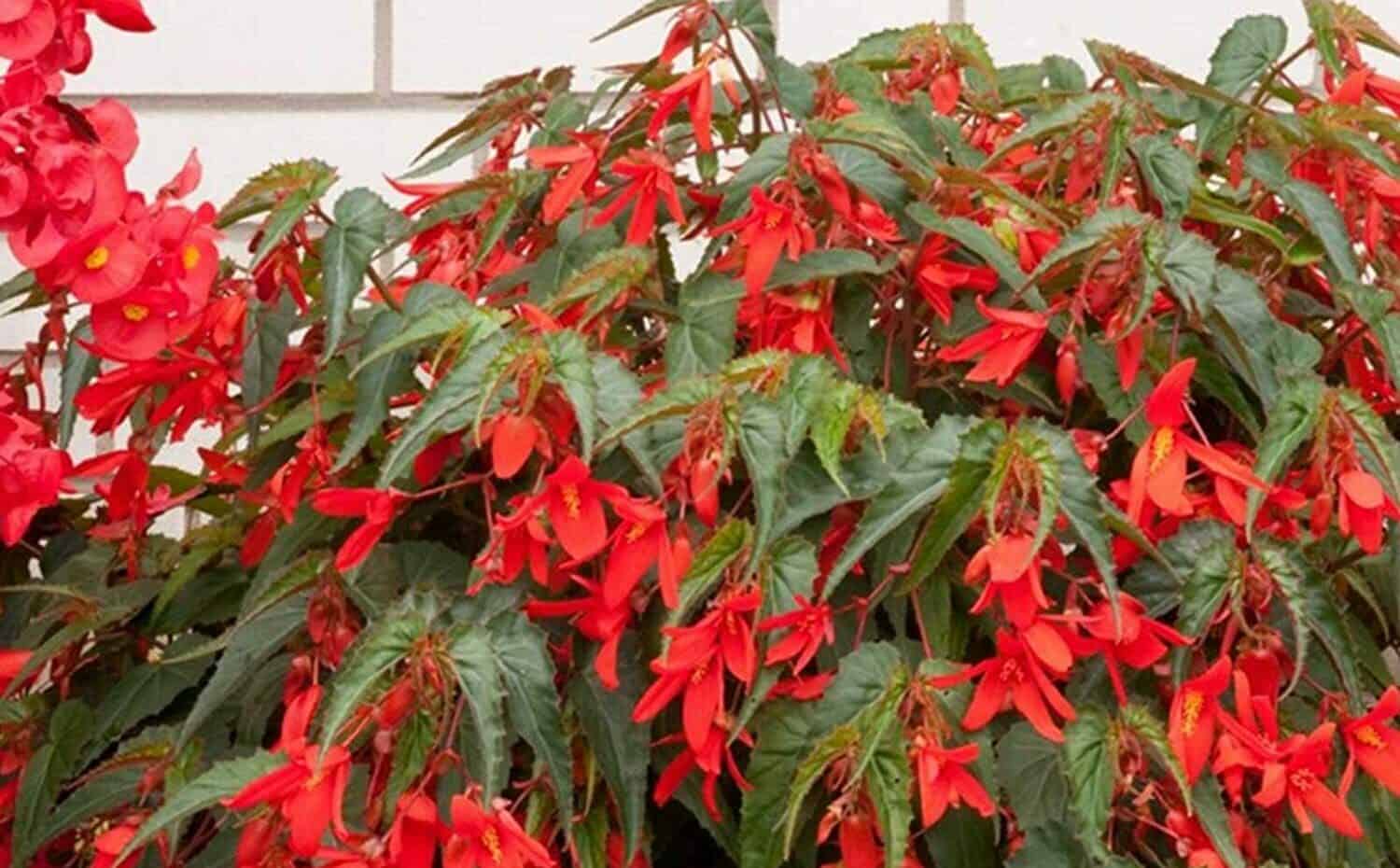
These plants love the full sun, except when you live in an area where the climate is hot and dry. These begonias can also thrive in areas that receive partial shade. Semperflorens begonias can grow anywhere from four to 18 inches (10.2 to 45.7 centimeters). However, it’s recommended if you prune them to encourage them to flower more.
This type of begonia will do well in any temperature you’re comfortable with, but they tend to favor temperatures at around 60 degrees Fahrenheit (15.6 degrees Celsius). Feeding your semperflorens begonias should start with a complete fertilizer and mixed with something rich in phosphorus.
To propagate, you can use a tip or stem cuttings, just as long as these stems have two leaf buds or more.
Shrub-Like Begonia
Some begonias are also classified as shrub-like, varying in height from minis to more than 12 feet (3.7 meters). There are shrub begonias that have shiny and smooth leaves, while others have felted ones.
Shrub begonias have a lot of shoots that grow out from the soil and have multiple stems. These plants do not bloom as frequently as other types of begonia. Some varieties do not even flower. They are the best-used bedding plants.
Shrub Begonia: A Short Care Guide
The thing is that shrub begonias are easy to grow. Depending on the type of shrub-like begonias you have, you will need just enough sun to keep them healthy. Expose them to a harsh sun for too long, and the foliage gets bleached. However, in some varieties, not getting enough sun can mean spindly growth and not enough blooms.
If you plan to put them into containers, you will want big and large pots to accommodate the tallest shrubs. Use loose and course growing medium, which shrub begonias love. Watering shrub-like begonias may be a bit challenging. These plants like just enough water, and giving it too much may cause the leaves to rot.
Some types need to be planted in a terrarium to ensure that they have the ideal humidity to thrive. Fertilize these plants when they start to bloom. That way, you get the most out of the growing season. To boost them when they’re not flowering, give them fertilizer that’s rich in phosphorus. Keep on fertilizing while shrub begonias are flowering.
Prune these plants when they become misshapen. Pruning will also urge the plant to grow more branches. Tip cutting and stem cutting are the best ways to propagate this plant.
Some shrub-like begonias include:
- Begonia ‘Alleryi’
- Begonia bufoderma
- Begonia chlorosticta
- Begonia domingensis
- Begonia exotica
- Begonia venosa
Thick-Stemmed Begonias
The thick-stemmed variant is probably the variety you see less often, and even when you encounter them, you might not recognize them as begonias. With very thick stems that do not branch out as much as other varieties do, these begonias send a new stem from their bases.
These begonias often shed the lower leaves and retain only the top foliage. They can be very challenging to grow, and they don’t especially like being indoors. For one, they can be space hoggers, requiring a lot of room so that they can grow healthy. Thick-stemmed begonias rarely bloom, and they do need full sun.
They are very adaptable when it comes to temperature or humidity levels. As long as you’re comfortable, these plants will probably thrive. If you keep them in pots, you might want to invest in big, tall, and heavy pots. Thick-stemmed begonias often have extensive roots. And using a heavy pot will prevent it from toppling over.
Like most begonias, you don’t have to water them too much. Water deeply and then repeat only when the topsoil is dry to touch. They also need a bit of fertilizing with a balanced NPK ratio. You will need to prune thick-stemmed begonias by cutting away the older stems to make room for new growth.
Some examples of thick-stemmed begonias include:
- Begonia dichotoma
- Begonia egregia
- Begonia vitifolia
- Begonia parviflora
Scandent or Trailing Begonias
These begonias are named after their growing behavior. These plants grow to some length over the ground, or they climb like vines. Compared to other types of begonias, there are very few cultivars of trailing begonias. But these begonias are perfect for hanging baskets or wrapped around your garden’s trellis.
The leaf shapes and sizes can differ widely, and depending on the cultivar you have, a trailing begonia might have a lot of small leaves or fewer but bigger foliage. For the most part, however, trailing begonias will have small leaves and clustered flowers.
- Begonia fagifolia
- Begonia ‘Fragrant Beauty’
- Begonia loranthoides
- Begonia ‘Panasoffkee’
- Begonia solananthera
Caring for Scandent or Trailing Begonias
Trailing begonias like bright light and some direct sun. But keep them out of the hot midday sun. It’s a balance: you give it too much light, and the leaves become pale and look washed out. Too little, and their stems start to get longer.
Use a shallow container if you’re going to pot trailing begonias, and it should not be too big. If you need to repot, choose a container that’s only a size bigger than your current one. Trailing begonias like tight spaces, and if you give it too much room, the plant will become weak. Water them once the topsoil feels dry to the touch.
You should prune and pinch trailing begonias to make them look great. Old stems should go, while those long sections without leaves should also be prune. Pruning and pinching will encourage the plant to branch, so it looks great.
Tuberous Begonia
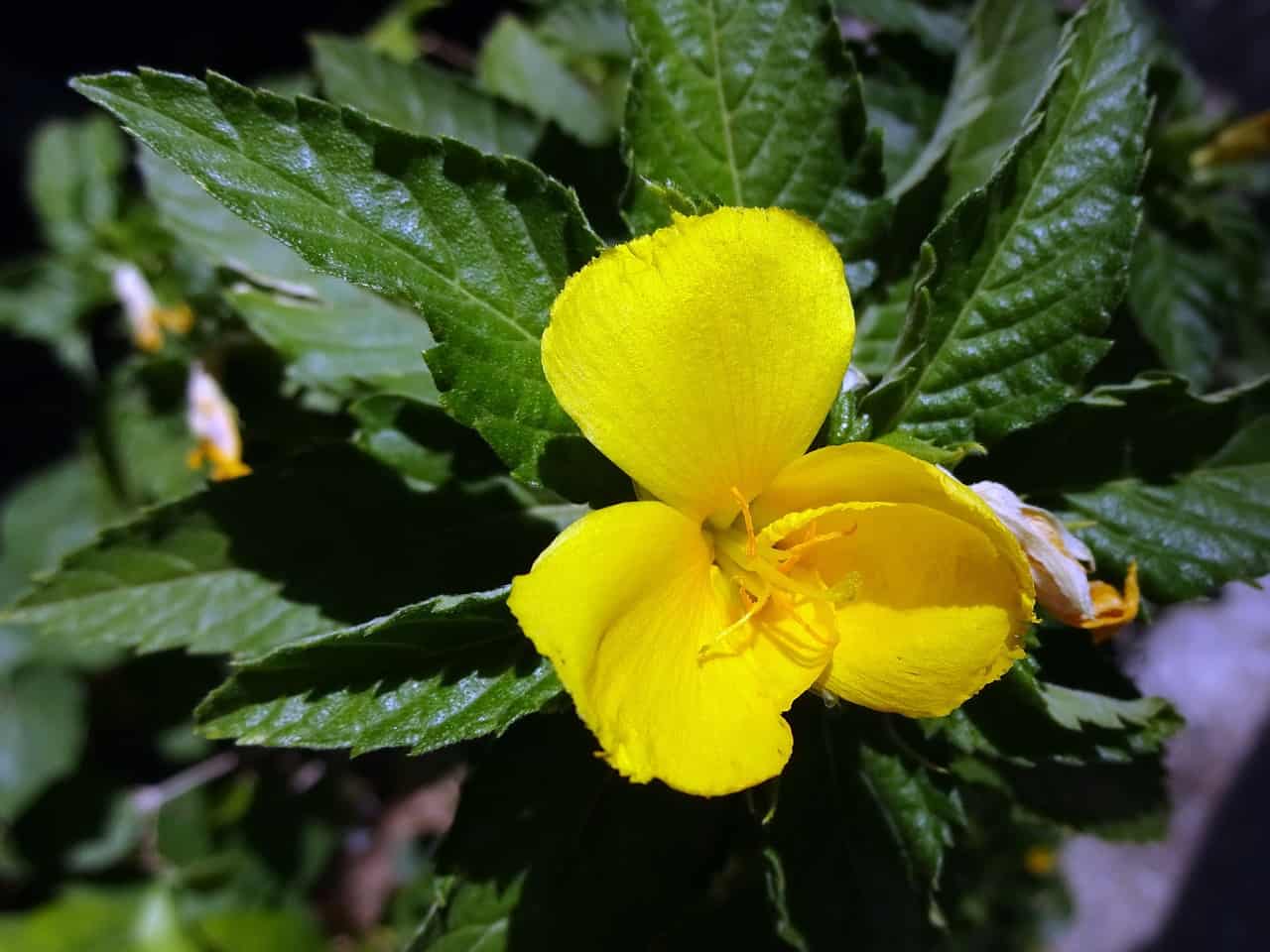
Used for beddings and grown in greenhouses, the tuberous begonia type also puts on a spectacular show when it flowers. The flowers can be small, from 0.5 inches (1.3 centimeters) to large ones that rival exhibition blooms. The flowers may be single or double. Some can even be very fragrant. These can come in all colors except blue, and some even have different colors for the edges.
The Begonia guttata, Begonia pearcei, and Begonia sutherlandii are some examples of tuberous begonia.
Caring for Tuberous Begonia
These plants will grow dormant during the colder months, starting in autumn and right through winter. Plus, they thrive in partial shade for the rest of the year. They don’t do well when placed under direct sun. What’s more, tuberous begonia can rot when you give it too much water. So on top of planting it in a fast-draining growing medium, you should also watch how much you water it.
These plants can also be demanding when it comes to humidity. They need high humidity, or they won’t reward you with too many flowers. But give it too much humidity, and they get fungal diseases such as powdery mildew. Further, you will need to fertilize tuberous begonia if you want it to bloom a lot.
We recommend a weak fertilizer such as fish emulsion when it’s still starting to grow. Then, use a bloom fertilizer that’s rich in phosphorus in combination with a high nitrogen product.
FAQs
Question: How do you care for begonias in general?
Answer: There are a wide variety of begonias that you can grow. For the most part, these plants are not winter-hardy. They thrive in USDA zones 9 to 11, but you will need to grow them as an annual or indoors.
Begonias are also grown as summer beds, while others are prized for the colors of their leaves and their blooms. As houseplants, begonias tend to grow anywhere from six to 12 inches (15.2 to 30.5 centimeters), but some varieties can reach up to at least five feet (152.4 centimeters) in height when grown outside.
Most begonias like shaded areas to grow in, while some love to bask under the sun. Begonias thrive in well- or fast-draining soil because these plants do not like to be overwatered and can rot if left with too much moisture.
Plant begonias when you’re sure that there are no more threats of frost. These plants like balanced fertilizers, but if you’re growing them for their leaves, use one with more nitrogen.
Overall, you will need to protect begonias from mealybugs, powdery mildew, stem rot, and rhizome rot, among other diseases and pets.
Answer: Question: Are begonias safe for pets?
If you have furry family members living with you, you should think twice about planting begonias. These plants have soluble calcium oxalates. The potassium and sodium salts that have oxalic acid can lead to hypocalcemia, reducing blood calcium and metabolic imbalance.
If a dog eats the leaves or flowers of a begonia, they will lose appetite, vomit, diarrhea, and drool too much. Lethargy, weakness, abnormal heart rhythms, and blood in the urine have also been observed.
This compound is also toxic to cats and horses. They can cause kidney failure in grazing animals as well. Begonias are definitely harmful to pets, but the roots are incredibly poisonous.
Answer: Question: What type of growing medium should I use for begonias?
Begonias like loose, light, and well-draining soil. When growing them outside, you can grow begonias in sandy loam soil. Or you can put them in raised beds if you have clay soil.
However, it’s better if you use a soilless potting mix for your begonias. Or put them in containers. For potting mixes, try the following products:
DirtCo Coco Peat and Perlite Potting Mix
MOTHER EARTH Coco Plus Perlite Mix
Miracle-Gro Indoor Potting Mix
And for containers, you have a wide variety of options, including hanging baskets and terracotta pots.
Suncast 18″ Waterton Resin Flower Planter Pot
Ashman 14 Inch Metal Hanging Planter Basket with Coco Coir Liner
La Jolie Muse Large Hanging Planters
D’vine Dev Store Large 10 Inch Terracotta Plant Pot
Discover the Best Begonias for Your Garden and Living Room
While most begonias have the exact care requirements, it still helps to know which ones are best for where you are. Now that you know which ones have the best leaves or flowers and how to take care of them, you should get started on growing healthy and beautiful begonias.
Recommended Reads:
- Begonia Pavonina: How to Sprout The Peacock Begonia?
- Begonia Ferox: How Long It Takes For Begoniaceae To Sprout?
- Escargot Begonia: Why Is The Rex Begonia So Rare?
- Begonia Boliviensis: Things To Do When Growing This Plant
- Peperomia Argyreia: How to Grow The Watermelon Begonia
- Strawberry Begonia: When It’s The Perfect Time To Propagate It?
- Painted Leaf Begonia: How Much Maintainance Does The Rex Begonia Needs?
- Dragon Wing Begonia: How Long Can This Plant Last Indoors?
- Rieger Begonia: What Can You Expect The Hiemalis Begonia To Flourish
- Polka Dot Begonia: What Can You Do To Keep This Plant Healthy?
